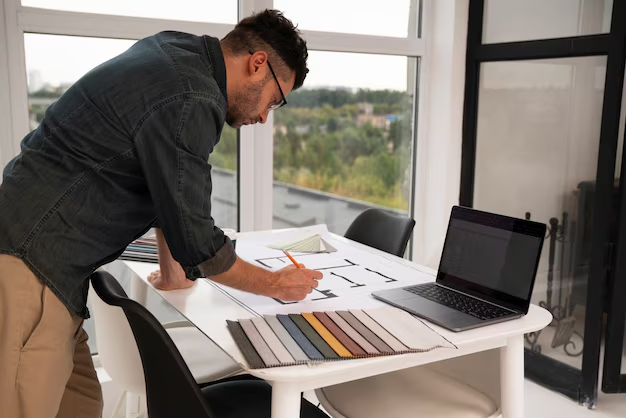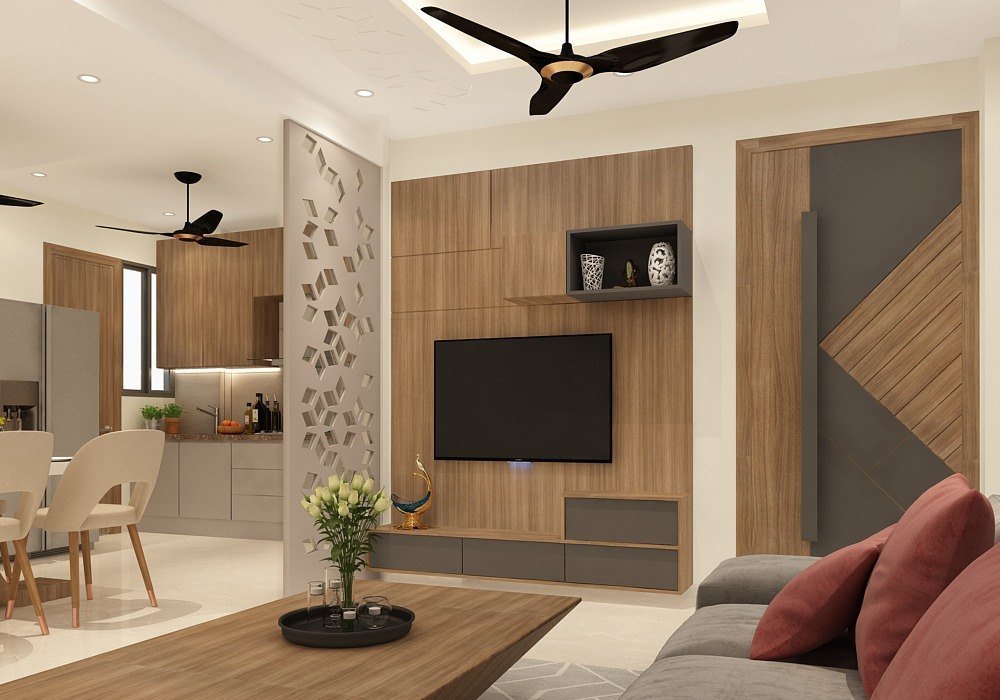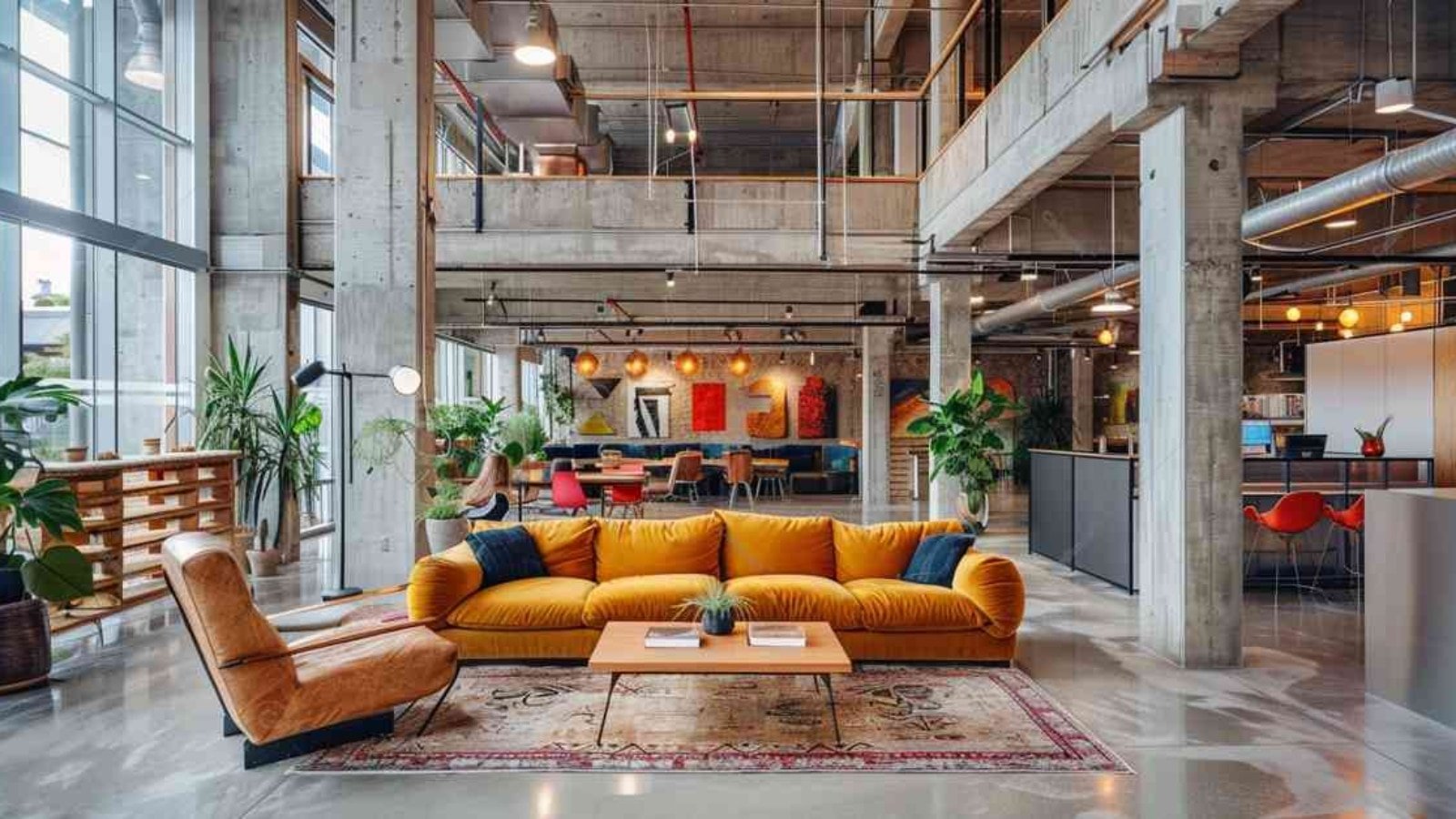The world of interior design is ever-evolving, with new trends, styles, and innovative approaches emerging constantly. As technology and societal needs shift, so too do the designers who lead the way. This article explores some of the most exciting and emerging talents in the interior design world, highlighting their unique styles, innovative approaches, and the impact they are making in the industry.
Key Takeaways
- Emerging Talent: New designers bring fresh perspectives and innovative ideas to the interior design industry.
- Sustainability Focus: Many emerging designers prioritize eco-friendly practices and materials, addressing environmental concerns.
- Technological Integration: Advances in technology, like VR and sustainable design tools, are changing how designers conceptualize and execute projects.
- Unique Styles: Look for distinctive aesthetics and cultural relevance in the work of emerging designers.
- Engagement and Communication: Strong communication with clients leads to more personalized and impactful designs.
- Affordable Options: Emerging designers often provide competitive pricing as they build their reputations.
- Support Through Visibility: Sharing and promoting emerging designers’ work can help elevate their careers and contribute to a diverse design landscape.
The Importance of Emerging Talent in Interior Design
Emerging designers bring fresh perspectives and innovative ideas to the table. They challenge traditional norms, embrace sustainability, and leverage technology to create spaces that are not only aesthetically pleasing but also functional and meaningful. As the demand for unique and personalized spaces grows, these designers are poised to redefine what interior design means.
Notable Emerging Interior Designers
Jessica Helgerson
Background: Based in Portland, Oregon, Jessica Helgerson is known for her commitment to sustainable design. Her firm focuses on creating spaces that are both beautiful and environmentally responsible.
Style: Helgerson’s work blends modern aesthetics with natural materials. She often incorporates energy-efficient elements and sustainable practices into her designs, creating homes that are as functional as they are stylish.
Impact: Her designs promote a healthy lifestyle and environmental stewardship, appealing to a growing demographic of eco-conscious homeowners.
Breegan Jane
Background: An interior designer and television personality, Breegan Jane has made a name for herself in the design industry with her vibrant and eclectic style.
Style: Jane’s designs often feature bold colors and unique patterns. She believes in creating spaces that reflect the personality of the inhabitants, using statement pieces to make a lasting impression.
Impact: Her work encourages clients to express their individuality through design, pushing the boundaries of traditional interior aesthetics.
David J. Lewis
Background: An architect and designer based in New York, David J. Lewis focuses on creating immersive environments that foster community and interaction.
Style: Lewis’s work often emphasizes spatial relationships and how design can enhance human connections. He utilizes innovative materials and techniques to create dynamic spaces.
Impact: His designs challenge conventional layouts, promoting social interaction and engagement in public and private spaces.
Nadia S. Waller
Background: An up-and-coming designer from Toronto, Nadia S. Waller is gaining attention for her culturally inspired designs that reflect her diverse background.
Style: Waller’s work combines modern minimalism with rich cultural influences, resulting in unique and inviting spaces. She often incorporates handmade elements and artisanal crafts.
Impact: Her designs celebrate diversity and heritage, creating environments that resonate with a wide range of cultural backgrounds.
Sofia Aspe
Background: Based in Mexico City, Sofia Aspe is known for her innovative approach to residential and commercial design, blending traditional Mexican aesthetics with modern sensibilities.
Style: Aspe’s designs feature bold colors, intricate patterns, and a mix of textures that pay homage to Mexican culture while embracing contemporary trends.
Impact: Her work has revitalized interest in traditional Mexican design, showcasing its relevance in modern architecture and interior design.
Maggie K. Hargrove
Background: A recent graduate from a top design school, Maggie K. Hargrove is making waves with her fresh approach to sustainable design practices.
Style: Hargrove emphasizes biophilic design, integrating nature into interiors through the use of natural materials and greenery. Her aesthetic is clean, modern, and soothing.
Impact: By advocating for sustainability, Hargrove is inspiring a new generation of designers to consider the environmental impact of their work.
Bobby Berk
Background: Known from the popular Netflix show “Queer Eye,” Bobby Berk has transitioned from a television personality to a sought-after interior designer.
Style: Berk’s designs often feature a mix of modern and eclectic styles, emphasizing functionality and comfort. He aims to create spaces that are both beautiful and livable.
Impact: His work emphasizes the importance of personal style and emotional connection to space, resonating with a broad audience.
The Role of Technology in Emerging Design
Emerging designers are increasingly leveraging technology to enhance their work. From virtual reality (VR) to advanced software, technology is revolutionizing how designers conceptualize and execute their projects.
Virtual Reality and Augmented Reality
These technologies allow designers to create immersive experiences for clients. By visualizing spaces in 3D, clients can better understand the design before any physical work begins. This not only enhances client satisfaction but also reduces costly revisions.
Sustainable Design Tools

Many emerging designers are incorporating technology to promote sustainability. Tools that calculate the environmental impact of materials and energy-efficient options are becoming essential in the design process.
Social Media and Digital Marketing
Platforms like Instagram and Pinterest have become vital for designers to showcase their work and reach potential clients. Emerging designers are using these tools to build their brands and connect with audiences in innovative ways.
How to Identify Emerging Talent in Interior Design
As you explore the world of interior design, look for signs of emerging talent:
- Unique Aesthetic: Emerging designers often have a distinct style that sets them apart from established designers. Look for originality in their work.
- Innovative Approaches: Pay attention to how designers incorporate new materials, technologies, and sustainability practices into their designs.
- Cultural Relevance: Emerging designers often draw inspiration from their backgrounds and current societal trends, creating work that resonates with contemporary audiences.
- Client Engagement: Designers who actively engage with their clients and involve them in the design process are likely to create more personalized and impactful spaces.
The Creative Visionaries: Profiles of Influential Interior Designers
Interior design is a fascinating blend of artistry, functionality, and psychology. Influential designers shape our living and working environments, making spaces not just beautiful but also practical and reflective of our lifestyles. This article explores the lives and works of some of the most impactful interior designers, highlighting their unique styles and contributions to the design world.
Kelly Wearstler
Background: Kelly Wearstler is known for her eclectic and bold design style. Born in South Carolina and raised in a creative environment, she graduated from the Massachusetts College of Art and Design before moving to Los Angeles to pursue her career.
Design Philosophy: Wearstler’s approach combines luxury with a sense of playfulness. She often blends historical references with contemporary aesthetics, creating spaces that feel both timeless and modern.
Notable Projects: Her work includes high-profile hotel designs, such as the Viceroy in Santa Monica and the Avalon Hotel. Wearstler has also published several design books and launched a successful line of home furnishings and decor.
Jonathan Adler
Background: Jonathan Adler, an American potter and designer, gained fame for his unique approach to modern design infused with humor and vibrant color. After studying at Brown University, he launched his design career in New York City.
Design Philosophy: Adler’s style is characterized by bold colors, geometric patterns, and a mix of vintage and modern elements. He believes in designing spaces that are both aesthetically pleasing and filled with joy.
Notable Projects: He has designed numerous retail stores, hotels, and residences, including the Parker Palm Springs. Adler is also known for his distinctive pottery and a range of home decor items that reflect his playful style.
Philippe Starck
Background: Philippe Starck is a French designer known for his innovative and sometimes whimsical designs. His work spans various fields, from furniture to architecture. He studied at the École Nissim de Camondo in Paris.
Design Philosophy: Starck believes in democratizing design, creating products that are accessible and usable by everyone. His work often incorporates a sense of humor and surprise, challenging conventional design norms.
Notable Projects: Starck has designed everything from hotels like the Delano in Miami to kitchenware and furniture. His ability to blend functionality with avant-garde aesthetics has made him a leading figure in contemporary design.
Iris Apfel
Background: Iris Apfel, a fashion icon and designer, is celebrated for her unique style and vibrant personality. Born in New York City, she started her career in the fashion industry before transitioning to interior design.
Design Philosophy: Apfel’s approach combines eclecticism with a deep appreciation for textiles and craftsmanship. She often uses bold patterns, bright colors, and a mix of cultures to create rich and layered environments.
Notable Projects: She has worked on various high-profile design projects, including the restoration of the historic textile company Old World Weavers. Apfel’s eye for detail and passion for design have made her an influential figure in both fashion and interiors.
Patricia Urquiola
Background: Patricia Urquiola is a Spanish designer based in Milan. She studied architecture at the Polytechnic University of Madrid and later worked with renowned designers like Achille Castiglioni.
Design Philosophy: Urquiola’s work reflects a harmonious balance between innovation and tradition. She often experiments with materials and textures, creating designs that are both functional and sculptural.
Notable Projects: Her portfolio includes residential, commercial, and product design. She has collaborated with brands like Moroso and Boffi, and her designs have won numerous awards, establishing her as a key player in contemporary design.
Bobby Berk
Background: Known for his role on Netflix’s “Queer Eye,” Bobby Berk is an influential interior designer who focuses on creating functional and stylish spaces. He began his career in retail design before branching out into residential projects.
Design Philosophy: Berk’s approach emphasizes comfort and personalization. He believes that interior design should enhance everyday life, making spaces livable and inviting.
Notable Projects: Berk has transformed countless homes, showcasing his ability to blend style with functionality. His designs often incorporate smart home technology and practical solutions for modern living.
Angela Harris
Background: Angela Harris is a rising star in the interior design world, known for her bold use of color and texture. With a background in fine arts, she brings a painterly approach to her design projects.
Design Philosophy: Harris emphasizes the emotional impact of color and space, believing that design should resonate with the inhabitants. Her work often features a mix of contemporary and traditional elements.
Notable Projects: Her work includes residential and commercial projects that highlight her unique aesthetic. Harris’s ability to create spaces that are both beautiful and meaningful has garnered her recognition in the industry.
Tadao Ando
Background: Tadao Ando is a Japanese architect and designer renowned for his minimalist approach and integration of natural elements. He began his career as a carpenter and later studied architecture independently.
Design Philosophy: Ando’s work emphasizes simplicity, light, and the relationship between architecture and nature. He often uses concrete and glass to create serene spaces that encourage reflection.
Notable Projects: His designs include the Water Temple in Awaji Island and the Church of the Light in Osaka. Ando’s ability to create harmony between built environments and nature has earned him numerous awards and accolades.
Color and Texture: How Interior Designers Create Inviting Atmospheres
Creating an inviting atmosphere in interior design is a nuanced art, primarily guided by the interplay of color and texture. These elements are pivotal in shaping how we experience a space, influencing our emotions and behaviors. This article explores how interior designers utilize color and texture to foster welcoming environments that resonate with comfort and style.
The Power of Color in Interior Design
Color Theory Basics

Color theory serves as the foundation for effective interior design. It encompasses the color wheel, color harmony, and the psychological effects of colors:
- Warm Colors: Reds, oranges, and yellows exude energy and warmth, making them perfect for social spaces like living rooms and kitchens.
- Cool Colors: Blues, greens, and purples evoke calmness and tranquility, ideal for bedrooms and relaxing spaces.
- Neutral Colors: Grays, whites, and beiges provide a versatile backdrop that balances vibrant hues while adding sophistication.
Creating Mood and Atmosphere
The strategic use of color allows designers to influence the mood of a room:
- Energetic and Inviting: A bright yellow or orange dining area encourages conversation and social interaction.
- Calming and Relaxing: Soft blues and greens in a bedroom create a peaceful retreat, perfect for relaxation.
- Elegant and Sophisticated: Rich, dark colors like navy or emerald can add a sense of luxury to a space.
Color Schemes and Combinations
Designers often employ specific color schemes to create harmony:
- Monochromatic: Variations of a single color provide depth while maintaining a clean look.
- Analogous: Colors adjacent on the color wheel (like blue and green) create a serene and comfortable palette.
- Complementary: Opposite colors (such as blue and orange) can create vibrant contrasts that add visual interest.
The Role of Texture
Understanding Texture
Texture refers to the surface quality of materials and can be both visual and tactile. It adds depth, richness, and complexity to a space:
- Smooth: Materials like glass and polished metals create a sleek, modern aesthetic.
- Rough: Textures such as reclaimed wood or stone evoke a rustic, organic feel.
- Soft: Fabrics like velvet or cotton contribute warmth and comfort, making spaces feel inviting.
Creating Visual Interest

Texture enhances the visual appeal of a room and prevents monotony. Designers often mix textures to create layers:
- Contrasting Textures: Pairing soft cushions with a sleek leather sofa invites comfort while adding depth.
- Textured Walls: Incorporating materials like wallpaper or decorative finishes can create focal points and enhance the overall design.
Enhancing Comfort
Texture plays a significant role in the tactile experience of a room. Soft textiles, plush rugs, and comfortable furnishings create a sense of warmth:
- Layering Fabrics: Using a variety of textiles—throws, cushions, and curtains—adds comfort and coziness to living areas.
- Natural Elements: Incorporating materials like wood, stone, and plants can create inviting atmospheres that connect with nature.
The Interplay of Color and Texture
Creating Balance
The relationship between color and texture is vital for achieving harmony. A neutral color palette can be enhanced with textured elements to prevent a space from feeling flat or sterile.
Focal Points
Designers often use bold colors and textures to create focal points. For instance, a vibrant, textured accent wall can draw attention and add character to a room.
Transitioning Spaces
In open-plan designs, color and texture can help delineate areas. A textured area rug, for example, can define a living space within a larger room, introducing color and depth.
Case Studies: Color and Texture in Action
A Cozy Living Room
In a recent project, a designer transformed a small living room using warm neutrals and a variety of textures. Soft beige walls created a calming backdrop, while a plush, textured area rug anchored the space. Vibrant cushions and throws in rich colors like burnt orange and deep red added warmth and comfort, inviting relaxation and conversation.
A Serene Bedroom Retreat
In a bedroom redesign, the designer focused on cool colors and soft textures to create a tranquil oasis. Light blue walls were complemented by crisp white bedding and a cozy gray throw. Textured elements, like a woven rattan headboard and sheer curtains, enhanced the serene atmosphere, promoting restfulness.
Also Read: The Role Of Texture In Creating Inviting Interior Design Aesthetics
Conclusion
The world of interior design is rich with emerging talent ready to make their mark. Designers like Jessica Helgerson, Breegan Jane, and Sofia Aspe are just a few examples of those pushing boundaries and redefining the aesthetic landscape. Their unique approaches, emphasis on sustainability, and innovative use of technology are shaping the future of design.
As the industry continues to evolve, keeping an eye on emerging designers can lead to fresh inspiration and new perspectives in interior design. By supporting these talents, we not only enrich our own spaces but also contribute to a vibrant design community that values creativity and innovation.
FAQs
What is the difference between established and emerging interior designers?
Emerging designers are typically newer to the field, often with fewer years of experience and a smaller portfolio. They bring fresh ideas and perspectives, while established designers may have a long-standing reputation and a more extensive body of work.
How can I find an emerging interior designer?
You can find emerging designers through social media platforms like Instagram, design blogs, and local design events. Networking within design communities can also help you discover new talent.
What should I consider when hiring an emerging designer?
Consider their portfolio, design philosophy, and how well they communicate with you. Look for designers who align with your vision and show a genuine interest in your project.
Are emerging designers more affordable than established ones?
Emerging designers may offer more competitive pricing as they build their portfolios and client bases. However, costs can vary based on location and project scope.
What trends are emerging in interior design right now?
Current trends include sustainable design practices, biophilic design, and the use of technology in design. Emerging designers often lead the way in these innovative approaches.
How can I support emerging designers?
You can support them by sharing their work on social media, commissioning projects, and attending their exhibitions or shows. Engaging with their content helps amplify their reach.
What role does sustainability play in emerging design talent?
Sustainability is a key focus for many emerging designers, as they prioritize eco-friendly materials and practices. This trend reflects a growing awareness of environmental issues and a desire to create responsible, lasting designs.




